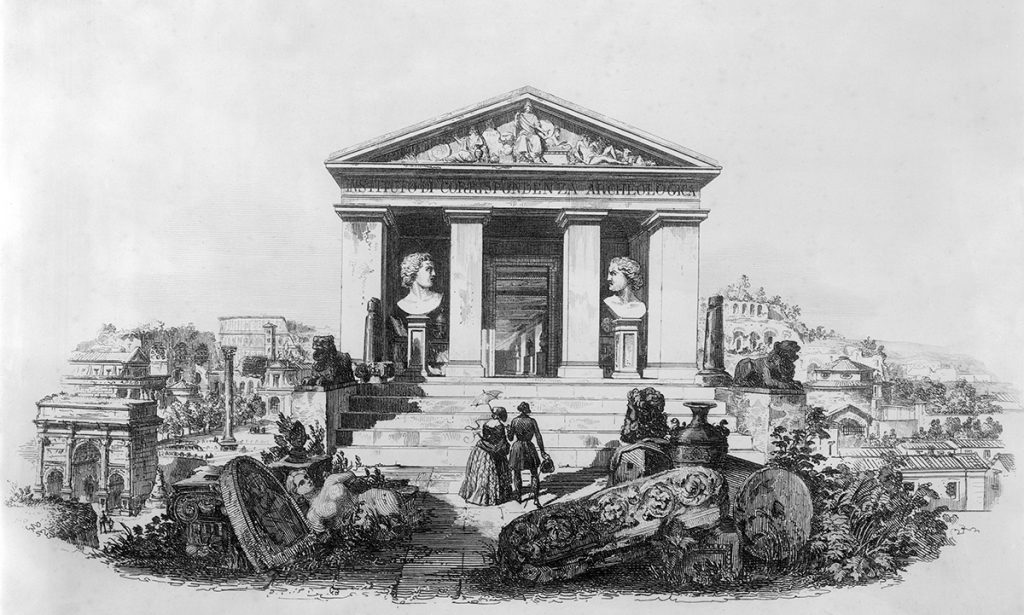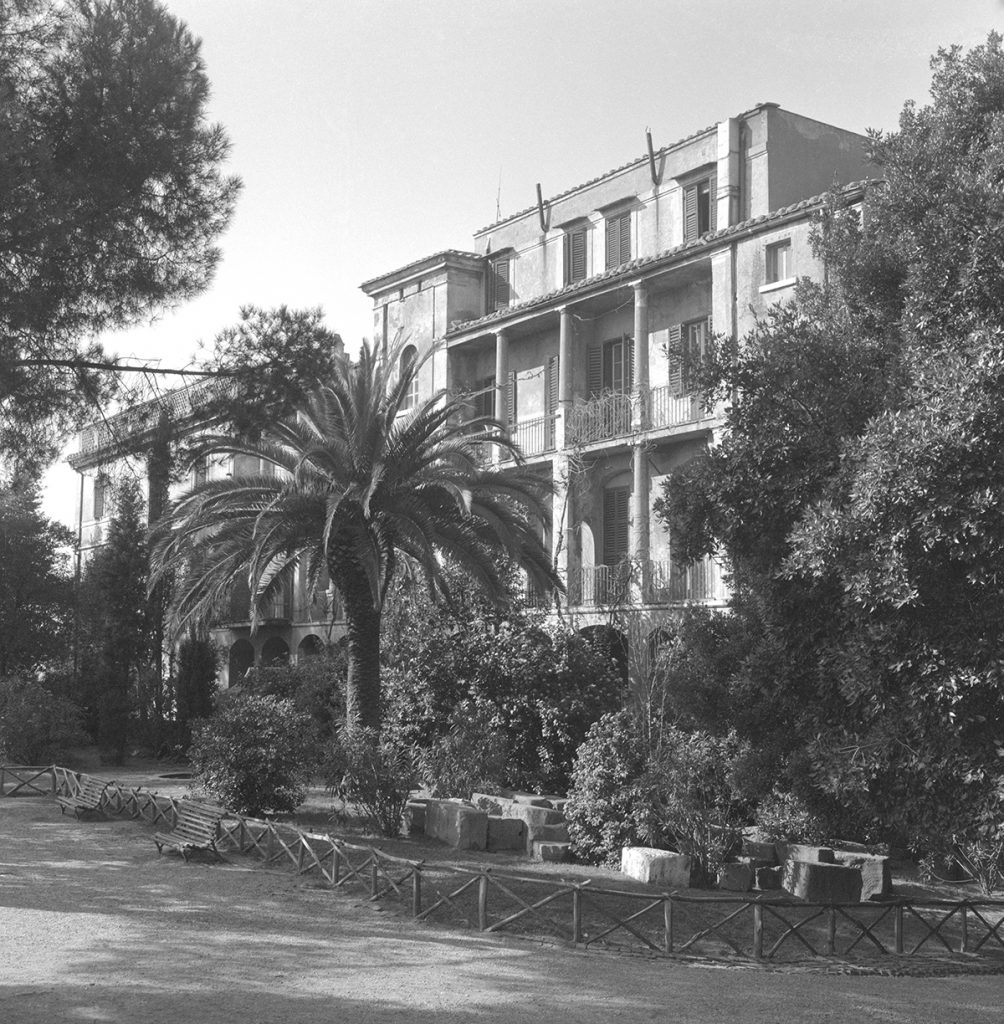In 1829, the Instituto di corrispondenza archeologica, forerunner of today’s German Archaeological Institute, was founded on the Capitol in Palazzo Caffarelli, the residence of the Prussian ambassador to the Holy See. The rapidly expanding library meant the institute needed a building of its own, and one was built next to the Protestant hospital, both opening in 1836.

Excavations by the Rome Department and the Sovrintendenza Capitolina ai Beni Culturali, which were able to commence last year, brought to light the foundations of a significant classical building which was fronted by column bases. The building definitely stood within the sanctuary of Iuppiter Optimus Maximus and may have been dedicated to a different deity whose name is as yet unclear. These important classical remains lie directly beneath medieval and modern layers. Also found were some wall remains of the institute’s first library which had remained in the ground after demolition of the building in the 1920s – unlike the facade with its gable decorated by sculptor Emil Wolff, which still stands at the site.
